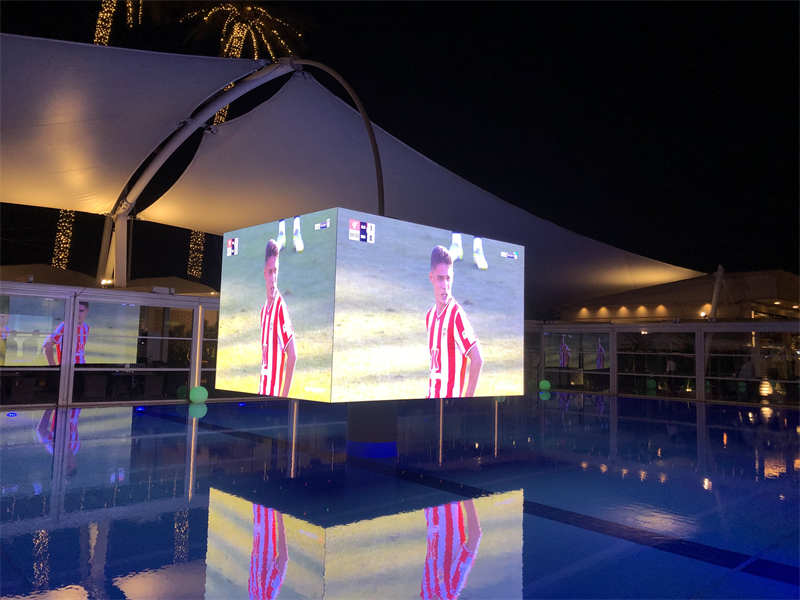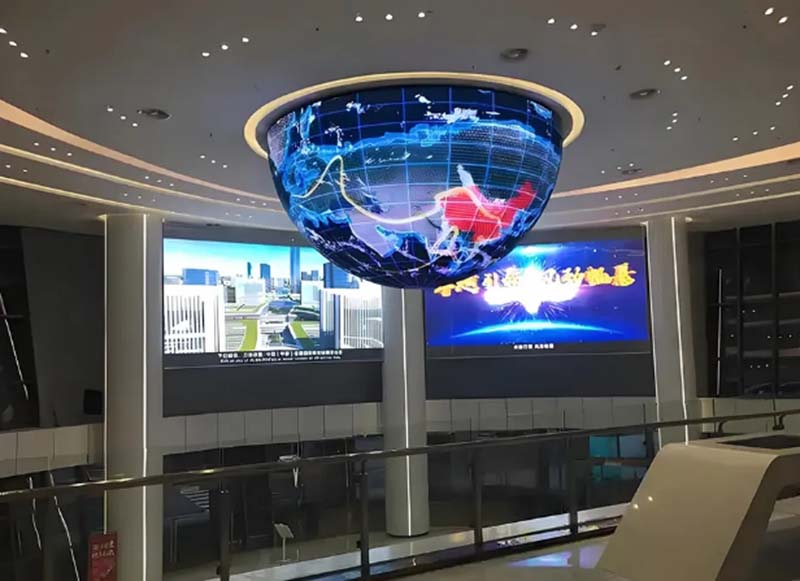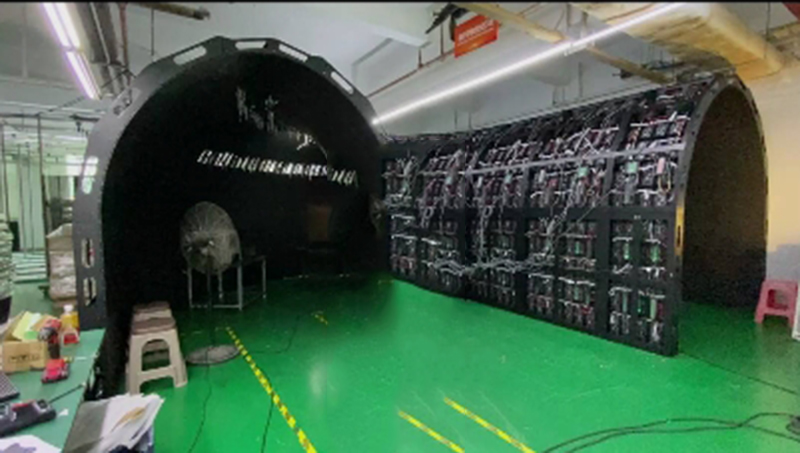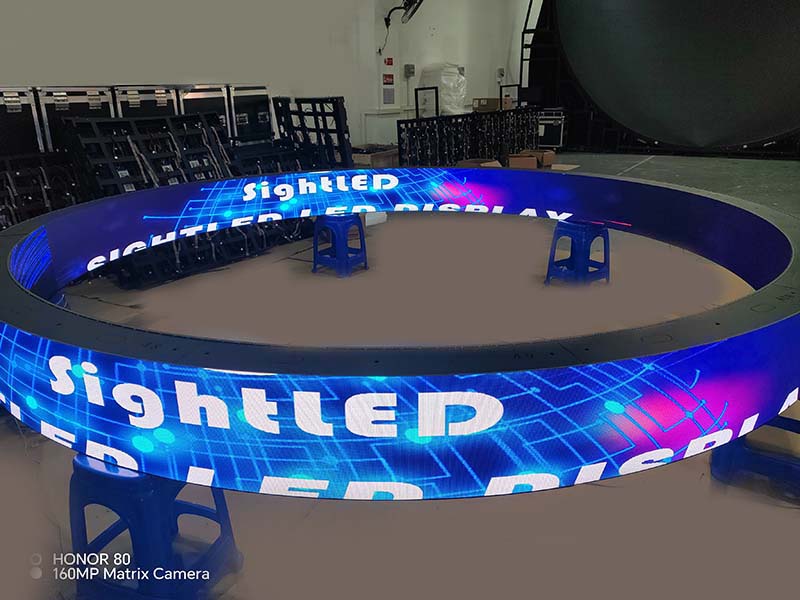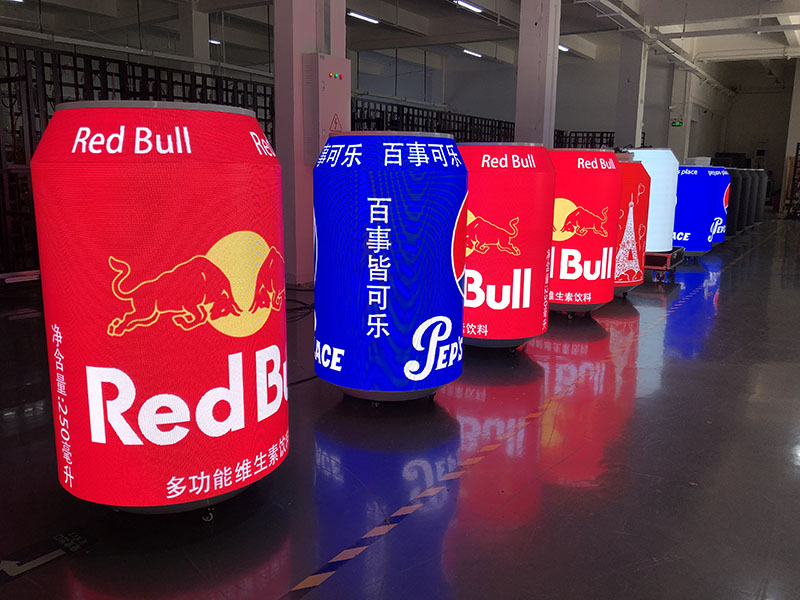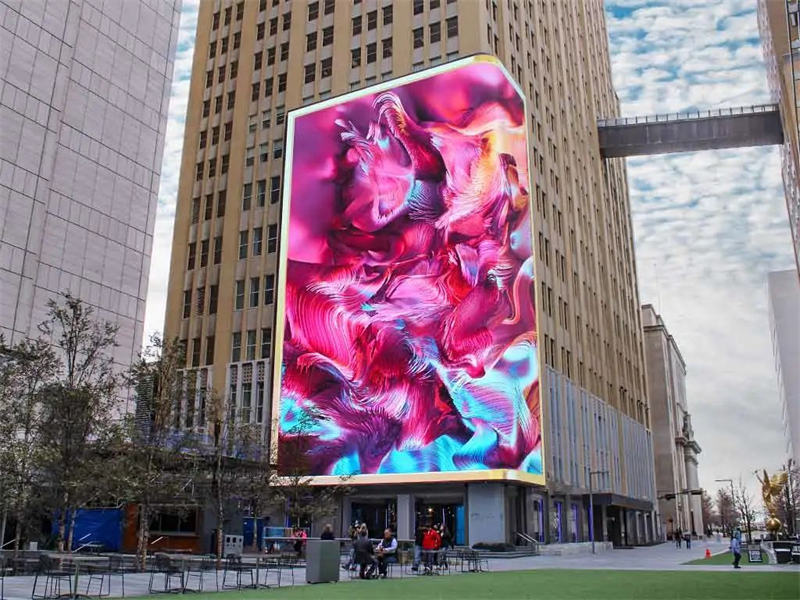Table of Contents
ToggleWhat is Column LED Display
Column LED Display, or “column LED display”, refers to a special LED display device. Its design feature is to arrange LED pixels in vertical columns to form the overall display area of the display. This kind of display usually has a high vertical resolution and is suitable for displaying text, numbers or certain images.
Here are some key features about Column LED Display:
- Vertical arrangement
The LED pixels are arranged vertically in columns, giving the display high definition in the vertical direction. - Flexibility
Due to its special arrangement, Column LED Display can more easily adapt to installation spaces of different shapes and sizes, especially to achieve large-size vertical display needs in a limited space.
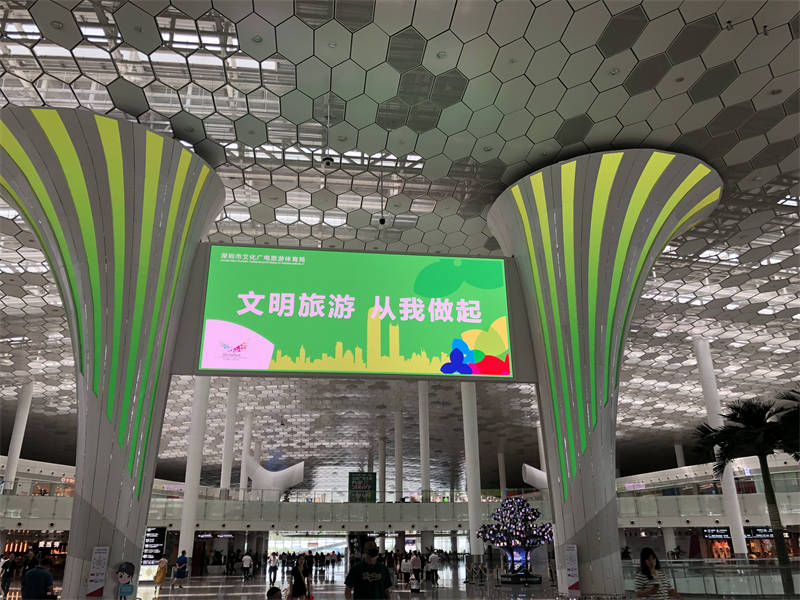
3.Visual effects
Due to its unique arrangement and design, Column LED Display is able to create a unique and eye-catching visual effect, especially when specific information or text needs to be highlighted.
- Energy saving and efficient
Using advanced LED technology, Column LED Display not only has excellent display effects, but also has a high energy efficiency ratio, which can reduce operating costs. - Customizability
This type of display can be customized according to user needs. Whether it is color, size or display content, it can be adjusted according to specific application scenarios.
Column LED Display is widely used in various occasions, such as information release and advertising in public places such as shopping malls, stations, airports, and sports venues, as well as display needs in indoor places such as conference rooms and exhibition halls. Its unique design and excellent performance make it a shining pearl in modern digital display technology.
How to customize Column LED display?
Customizing a Column LED display involves a series of steps, from requirements analysis to final installation and commissioning, to ensure that the display meets specific usage scenarios and needs. The following is a basic process for customizing a Column LED display:
- Requirements analysis
First, clarify the usage scenarios, size, resolution, display content and other requirements of the display screen. Consider the installation environment, such as indoors or outdoors, and whether special features such as waterproofing and dustproofing are required. At the same time, determine the budget to make reasonable decisions when selecting LED display type and configuration.
- Select LED display type
Based on the results of demand analysis, select the appropriate LED display type. For Column LED displays, you can choose products with vertically arranged LED pixels to meet the needs of high vertical resolution. At the same time, consider the brightness, contrast, color performance and other performance parameters of the display screen.
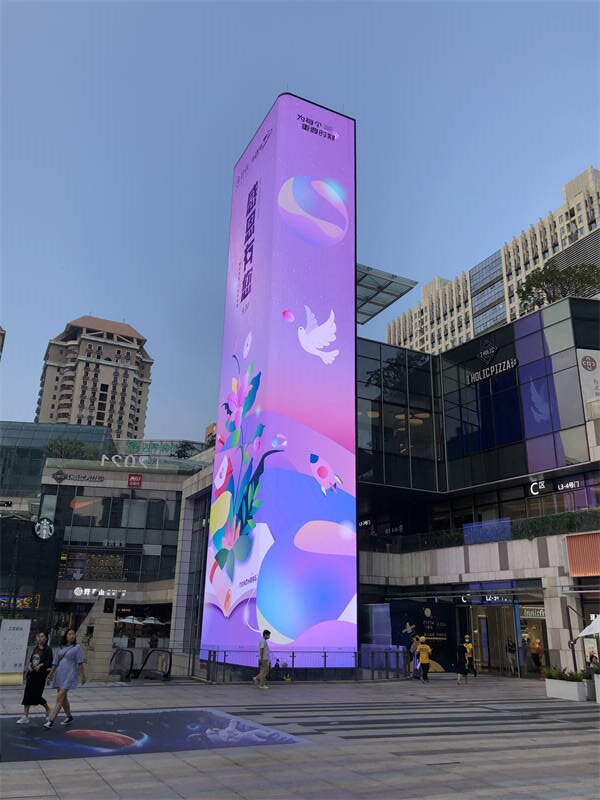
- Determine size and resolution
Determine the size and resolution of the display screen based on the usage scenario and display content. Make sure the display clearly displays the required information while blending in with its surroundings.
- Design display plan
Design the display solution of the display screen, including the layout of the display content, animation effects, subtitle scrolling method, etc. This needs to be customized according to specific application scenarios to ensure that the display effect meets actual needs.
- Purchase hardware and accessories
According to needs and design plans, purchase hardware and accessories such as LED displays, control systems, power supplies, and transmission lines. Make sure these hardware and accessories are of high quality and stable to ensure the normal operation and longevity of the display.
- Installation and debugging
Follow the installation guide and design plan to install and debug the display. Make sure the display is securely mounted, flat, and blends in with its surroundings. At the same time, the display screen is debugged to ensure that the display effect meets the design requirements.
Through the above steps, you can customize a Column LED display that meets your specific needs. Please note that each step requires careful consideration and care to ensure the final display product meets your expectations and needs.
How much Column LED Display
The price of a column LED display varies widely based on several factors including:
- Size: Larger displays typically cost more than smaller ones.
- Resolution: Higher resolution displays generally come with a higher price tag.
- Quality: Displays with better build quality and materials may cost more upfront but could offer better longevity.
- Features: Additional features such as weather resistance, brightness levels, and interactive capabilities can affect the price.
- Manufacturer: Different manufacturers may offer similar products at different price points based on brand reputation, support services, and other factors.
Without specific details on your requirements, it’s challenging to provide an exact price. However, for a basic, small to medium-sized column LED display, you might expect to pay anywhere from a few hundred to a few thousand dollars. Larger or more advanced displays can range from several thousand to tens of thousands of dollars or more. It’s best to contact LED display manufacturers or suppliers directly for accurate pricing based on your specific needs.
How to Make a Pillar LED Display?
There are two ways to make a pillar LED display:
using flexible LED modules and display screens that support 90° right-angle splicing. The following are the production steps of these two methods:
(1) Flexible Column LED Display
Flexible LED displays have the property of being bendable.
They can be used to manufacture creative LED screens with various shapes, including indoor cylinder LED displays and outdoor LED column screens.
The LED columns made of soft LED modules have smooth curves and complete images.
The following two steps show you the main production steps:
① Prepare materials: Purchase the required number of flexible LED modules, control system, power supply, bracket, and other materials.
② Design plan: Design the layout plan of the LED display according to the size and shape of the pillar, and determine the number and arrangement of LED modules.
③ Make bracket: Make the bracket structure to support the LED column display. Ensure its stability and safety, and support the installation of LED modules.
④ Install LED modules: Install the flexible LED modules on the surface of the pillar according to the layout of the design plan, ensure the spacing and arrangement between the LED modules are neat, and pay attention to the layout and fixation of the connecting wires.
⑤ Connect the power supply and control system: Connect the LED modules to the power supply and control system to ensure the normal operation and flexible control of the LED display.
⑥ Test and debug: Test and debug the LED display screen to ensure the normal display effect and adjust parameters such as brightness and color.
(2) 90°Right-angle LED Display
Rental LED display cabinets or indoor LED display cabinets with special angle cutting support 90°right-angle installation.

Advantages:
① 90-degree splicing: Right-angle splicing means that the modules of the LED display screen can be spliced at a 90-degree angle to form a right-angle structure.
This splicing method is suitable for building display screens with special shapes such as columns and wall corners, which increases flexibility and application scenarios.
② Flatness and alignment: 90-degree installation requires high surface flatness and alignment of the LED module.
During installation, it is necessary to ensure that the splicing interface is flat and tightly connected to avoid gaps and misalignment.
③ Visual effect: Right-angle installation can produce clear and continuous display effects.
Whether it is text, pictures, or video content, it can present a complete and coherent visual effect at the right-angle splicing.
④ Aesthetic design: Indoor square pillar LED displays can be used for decoration and beautification of buildings, such as corner LED displays, pillar LED displays, etc., to enhance the beauty and attractiveness of the building.
What you need to pay attention to:
① Splicing accuracy: Ensure that the size, spacing, and position of the LED modules are accurate and consistent to ensure the flatness and alignment of the splicing interface.
② Interface design: The interface design at the right-angle splicing needs to take into account the wiring and connection method of the LED module.
Ensure that the connection is tight and reliable, and not easy to loosen or disconnect.
③ Visual consistency: The LED module needs to have consistent brightness, color, and color temperature.
This is to ensure the consistency and coherence of the display content in the entire splicing area.
④ Heat dissipation and waterproofing: LED modules need to consider issues such as heat dissipation and waterproofing, (for outdoor scenes) to ensure that the LED display screen operates stably under various environmental conditions.
⑤ Maintenance: LED display modules need to be regularly inspected and maintained, clean dust in time, the connection wires and power supply, etc.
This helps to extend the service life of the pillar LED video wall.
How to Install a Square Pillar Screen?
Installing a square pillar LED screen involves several steps:
- Determine Installation Location: Decide where the LED display will be installed based on factors such as visibility, audience needs, and lighting conditions.
- Preparation: Gather the necessary tools and materials for installation, including brackets, screws, nuts, connecting wires, etc., to facilitate a smooth installation process.
- Install LED Display Cabinets: Mount each display cabinet of the LED screen onto the brackets. Ensure that each cabinet is positioned correctly, flat, and securely installed.
- Connect Wires: Connect various wires, including power cables and data cables, to enable power supply and communication for the LED display.
- Install LED Display Modules: Install the LED display modules into the display cabinets one by one. Ensure that the spacing between modules is uniform, creating a cohesive and complete LED display.
- LED Screen Debugging: Connect the power supply and conduct debugging for the LED screen. This includes adjusting brightness, calibrating colors, testing content, etc., to ensure that the square pillar LED screen functions properly and displays the desired content.

By following these steps carefully, you can effectively install a square pillar LED screen, providing an engaging visual display for your intended audience.
The future of LED screen columns holds significant potential and is likely to evolve in several ways:
- Technological Advancements: Continuous progress in LED technology will lead to improvements in resolution, brightness, color reproduction, and overall display quality. This will result in clearer, more vibrant visuals, enhancing the aesthetic appeal of LED screen columns.
- Expansion of Usage Scenarios: LED pillar screens will find application in a wider range of urban settings beyond just commercial districts. They’ll likely be integrated into parks, campuses, stadiums, and other public spaces to enhance cultural activities, communication, and urban life.
- Integration of Intelligent Features: With the rise of smart city initiatives and advancements in intelligent technology, LED screen columns will incorporate more intelligent functions. These may include automatic brightness adjustment based on ambient light levels, dynamic content adaptation according to environmental conditions, and interactive capabilities to improve user engagement and energy efficiency.
- Customization and Flexibility: LED displays offer high levels of customization and flexibility, allowing for unique designs tailored to specific urban environments. This trend will likely continue, with LED screen columns becoming increasingly versatile and adaptable to diverse architectural and urban design requirements.
- Sustainability: As environmental concerns become more prominent, there will be a growing emphasis on sustainability in LED screen column design and operation. This may involve the use of energy-efficient components, recyclable materials, and smart energy management systems to minimize environmental impact while maximizing longevity and performance.
Overall, the future of LED screen columns is characterized by advancements in technology, expanded usage scenarios, integration of intelligent features, customization, and sustainability. These developments will contribute to the continued integration of LED displays as innovative urban decoration and communication mediums, enhancing the visual appeal and functionality of modern cities.

